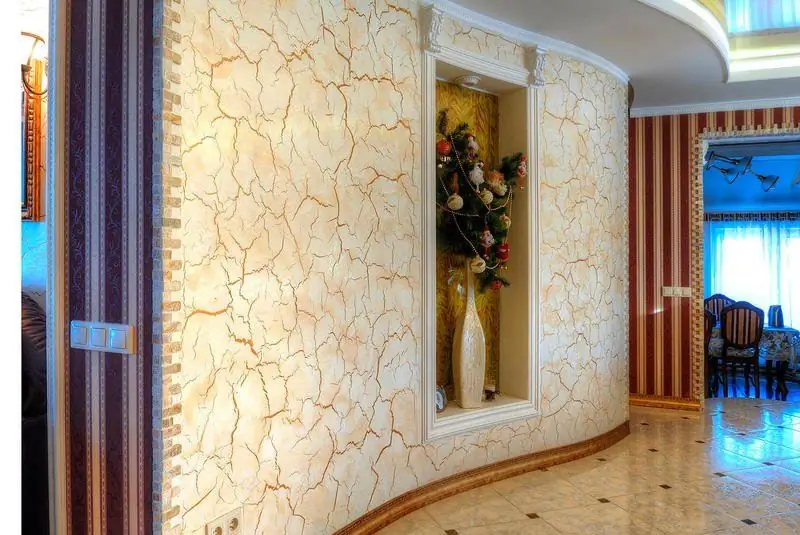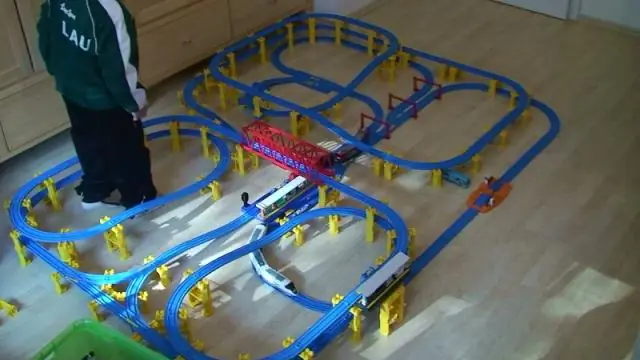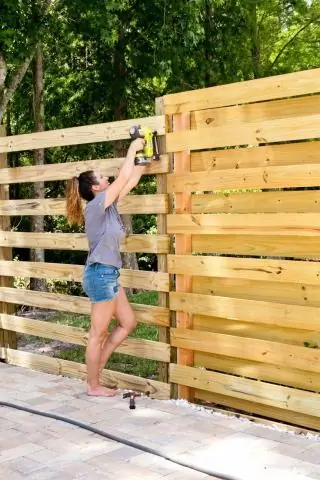
Table of contents:
- Author Bailey Albertson [email protected].
- Public 2024-01-17 22:26.
- Last modified 2025-01-23 12:41.
Venetian plaster in your home: do it yourself

Venetian plaster in the interior makes it possible to decorate the room, give it an atmosphere of luxury, and do it the way the master sees it. Whether it is an apartment or a private house, this type of decoration will allow you to realize fantasies about antiquity, the Renaissance, the hot Mediterranean summer. In addition, Venetian plaster has certain advantages, thanks to which it has become very popular in the modern market.
Content
-
1 More about Venetian plaster
- 1.1 Photo gallery: finished coating options
- 1.2 Material properties and types
- 2 Required materials and tools
- 3 Creating a material for plaster
- 4 Surface preparation
-
5 Putting Venetian plaster on the wall
- 5.1 Step by step instructions
- 5.2 Plaster "marbled": application features
- 6 Video on the application of Venetian plaster
More about Venetian plaster
The history of Venetian plaster goes back to ancient Rome, where marble was most often used as a building material, and the waste of its processing - dust, damaged blocks, chips, began to be used for surface finishing. In appearance, this "marble" was no different from the real one, and in use it was much easier than natural stone.

An example of the use of Venetian plaster in the interior
Many experts believe that Venetian plaster is much more durable and stronger than usual. Among its advantages are the following:
- Venetian plaster is an environmentally friendly, natural, and therefore harmless material;
- it well hides surface defects and irregularities on it;
- practically does not require thorough preliminary preparation;
- over time, it does not crack itself and does not allow cracks to appear on the wall;
- not afraid of exposure to water and temperature changes when coated with hydrophobic wax;
- the surface covered with such plaster can be easily repaired and restored.
The composition of this finishing material has hardly changed over the past centuries. Its main components are fine dust of marble, quartz, granite and other types of stone. The ratio of these components determines the structure of the future surface. In the old days, slaked lime served as a binder; now it can be synthetic additives, for example, acrylic. The rest of the ingredients are water and dyes. Previously, plant juices or animal blood were used as them, now they are artificial dyes.
Photo gallery: finished coating options
-

Venetian plaster in the living room - Venetian plaster in the living room
-

Venetian marble effect plaster - Venetian marble effect plaster
-

Depth of color and texture - Depth of color and texture
-

Heavenly tones - Heavenly tones
-

Painting on Venetian plaster - Painting on Venetian plaster
-

Wall finished with glossy plaster -
Wall finished with glossy plaster
-

Textured drawing on Venetian plaster - Textured drawing on Venetian plaster
Material properties and types
If you want to take advantage of all the possibilities of Venetian plaster, you will need information on its properties.
The color scheme of such a coating can be any, including imitating the surface of a stone, more often marble. The coloring pigment is added to the composition immediately before application.
The Venetian plaster itself is transparent, thanks to which it is easy to achieve a play of light on its surface. The finish can be applied to wood, concrete or brick. The material of the treated surface depends on how it needs to be prepared.

Any pattern or texture can be applied to Venetian plaster.
The texture of the coating is very easy to match to any type of interior. In addition, a pattern can be applied to such plaster, creating a unique design in the room.
Venetian plaster can be glossy or matte. You can get this or that look in different ways. For example, a matte finish is achieved by applying a thin layer of wax, which should be well absorbed. For a glossy surface, a different type of wax is used, which is applied to the surface, previously smoothed with a special tool. Thanks to it, friction is created, polymerizing the upper layers.
Required materials and tools
Before you start working with Venetian plaster, prepare everything you need:
- roller;
- rags;
- spatulas;
- sponges;
- masking tape;
- level, long ruler and tape measure;
- skin No. 120 and No. 220;
- plaster;
- pure water;
- containers for mixing water and composition;
- trowel;
- construction mixer or drill with an appropriate attachment;
- polishing machine with a wax polishing attachment.
In some cases, you may need additional tools for certain jobs. You will see them in the picture below.

Plastering tools
Stock up on a few different sized spatulas. The largest one is used to apply the base coat, and with the medium and small one you will apply patterns and designs. Suede mittens can also come in handy, with which the resulting coating can be polished.
Creating material for plaster
So, all the materials and tools are at your fingertips. Let's start preparing the mixture. You can do it in two ways.
- If you know the recipe for plaster, the proportions of all components, try to prepare the composition yourself. Mix certain amounts of stone dust (marble, quartz, malachite, etc.), hydrated lime and dye. It is quite difficult and will require professional skills from you.
- Buy a ready-made dry mix from a store. It just needs to be diluted with water. Strictly following the instructions for observing the proportions, pour water into the container and add the dry mixture. Stir the resulting solution thoroughly using a drill with a special mixer attachment. For the components to dissolve well, the water should be no colder than 10 degrees. Wait a few minutes and stir again. The consistency of the composition should resemble thick homemade sour cream. Now add the dye until you get the desired shade.
- In the store, you can buy a ready-made mixture and add dye to it.
Venetian plaster, completely prepared for application to the wall, you will not get anywhere. It can be either a dry mixture or a diluted base, and you need to do it yourself at home.

The process of preparing plaster using a drill with a mixer attachment or a special mixer
Venetian plaster is not so much a material (by the way, not cheap), but rather an application technology. Therefore, you will be able to make this type of coating from the available putty. Paint the quartz base primer the desired color by mixing thoroughly. Prime the wall with the compound. After that, tint the putty in the same color and apply it to the wall as the technology requires. To create the appropriate textured pattern, you will need two colors of putty. More details about Venetian plaster made from putty can be found in the video.
Surface preparation
Plastering the wall itself refers to preparatory measures, since it often hides flaws and small surface defects. But the application of Venetian plaster requires careful preparation. After drying, every crack and unevenness will be visible under the transparent composition.

Level, putty and prime the walls before plastering
It is necessary to apply such plaster on a completely flat and dry wall. First of all, the surface must be leveled, then apply a primer, preferably in two layers. For this, a primer with a quartz filler or special compounds, for example, vinyl paint or acrylic primer, are very suitable. On these funds, the Venetian plaster will fall perfectly. Do not forget that the surface must be given the color in which you will paint the plaster later.
We apply Venetian plaster to the wall
The technique of applying Venetian plaster is that the material is applied to the surface in several thin layers, consisting of randomly located spots of the composition. Apply them so that you get a layer of uneven thickness and create a smooth change in tones in the spot (this effect is called "color stretch"). A large number of these spots, arranged in several layers, will give the coating the illusion of deep texture.

Subject to the application technology, Venetian plaster will delight you with the depth of the texture
The first layer of plaster is made from a material containing fine marble chips. It will provide a secure grip on the base. This thin layer is applied like a normal putty, using a spatula or steel trowel.
After 4-6 hours, the first layer is completely dry. Now you can apply glazed layers, which create the texture of the picture.
Step-by-step instruction
- You need to start work from one of the upper corners. Apply the plaster in an even layer with movements from top to bottom and slightly to the side, in the same way as with putty.
-
Disperse the applied plaster to the sides with multidirectional movements. At the same time, hold the grater at an angle of 10-15 degrees to the wall, pressing firmly. Leave no spaces. At the bottom of the wall, work with a grater from bottom to top.

Plastering process Hold the grater at an angle
- After the wall has been leveled with plaster and completely dry, a facing putty is applied to the wall. Leave it to dry for 6-8 hours.
- Apply a primer diluted with water in a 1: 7 ratio. Rub it in thoroughly, pressing lightly on the mats. After applying two coats, leave to dry for 4-6 hours.
- Measure out the required amount of plastering primer, mix thoroughly. Add color and mix again with a mixer. Please note that if you miscalculate the proportion of the dye, you will have to apply correction layers later.
- Apply the material with a small trowel to the surface with a long grater. Smear it with arbitrary strokes, in short arcuate movements equal to the length of the grater.
-
At the end of each previous movement, an overflow of plaster forms on the surface. Accelerate it with a straight motion of the grater at an angle to its line. Alternate smearing and acceleration, arbitrarily change their length and direction. Thus, plaster about 1 square meter.

Smoothing out plaster spreads Disperse the flow of mortar with confident movements
- In this area to be treated, smooth out the plaster with long strokes. This should be done in arbitrary directions until a thin, even layer is obtained. Slightly increase the pressure of the tool and the angle of inclination relative to the wall to 22-25 degrees.
- Clean the trowel from excess plaster every 3-4 strokes, wipe it with a damp cloth.
- After finishing leveling the surface, wait 10-15 minutes. Then start smoothing the plaster from top to bottom in slightly criss-crossing movements using a large trowel. When gloss begins to appear, the pressure on the tool must be loosened so as not to damage the resulting crust.
-
Smooth out the plaster with a cleaned trowel to give it a final gloss. Press firmly on it with both hands, holding it at an angle of 5-10 degrees relative to the surface.

Rubbing plaster After the plaster is dry, rub it with a dry, clean trowel until gloss appears.
-
Repeat all operations on the following areas of the surface: apply the composition with strokes, disperse it and level it, smooth it until gloss is obtained.

Creating a texture when applying plaster Create texture with gentle movements
- At the borders of different walls, near obstacles, place the grater on the border line and start spreading movements, leading the tool inside the area to be treated. Use a small spatula on an awkward or small surface.
- Plaster around obstacles should be smoothed and polished with a short trowel. Move it from the obstacle into the area.
- If you are unhappy with the result after the gloss has formed on the surface, correct it as follows. While the material is still wet, apply another coat of topcoat. Arrange the spots randomly. Repeat all operations, after dividing the surface into areas of about 1 sq.
Plaster "marbled": application features
The marble effect on the wall surface is very popular due to its original appearance. The technology of applying Venetian plaster will allow you to achieve such a coating.

Venetian plaster "marbled" in the interior
Finishing with Venetian marble plaster is perfect for the kitchen, bathroom, dining room and living room. It can be applied to wooden, reinforced concrete surfaces, chipboard and drywall walls.
- Before starting work, prepare the surface of the wall by patching up ridges, unevenness and other defects, and applying a primer.
- If you plan to apply plaster to a metal surface, pre-treat it with epoxy or alkyd mortar. This will prevent corrosion of the metal. Otherwise, over time, damaged areas will show through the layer of marble trim.
- Prepare a plaster mortar. It must be applied after the primer has completely dried.
- Venetian marble plaster can be applied in two ways: manually using a trowel or using a compressor through a hopper. In the second case, finely dispersed crumbs are used, which significantly saves money. But you have to invite someone to help: one person works with the compressor, the second immediately smoothes the solution with a trowel.
- To apply the solution by hand (for the first method), you need a hand grater. Apply the material to its surface, and spread it over the wall surface, pressing the grater. Then level the surface with a spatula. It is better not to interrupt during work, otherwise the finish may be unevenly distributed.
- After the solution dries, process it with a grater. The layer thickness should be no higher than two granules or crumbs.
- Perform all work with a trowel and a steel float, cleaning them in the process. In case of defects, you can apply another layer.
After you have completed all the plastering work, cover the surface with wax: it will give a glossy effect and subsequently repel moisture. It is not necessary to apply too much of it, as wax darkens in large quantities over time.
Video about the application of Venetian plaster
Now you know how to give the interior of your home a pleasant translucent effect of light penetrating deep into the wall. Any room will be transformed with the help of Venetian plaster, it will become incredibly beautiful and light. If you have any questions about this topic, please ask them in the comments. We wish you easy work and comfort in your home!
Recommended:
How To Make A Bar Stool With Your Own Hands From Wood, Metal And Other Materials + Drawings, Photos And Videos

Bar stools manufacturing options. Required tools, materials used. Step-by-step description of the manufacturing process with a photo
How To Make And How To Paint A Concrete Fence With Your Own Hands - A Step-by-step Guide With Photos And Videos

Advantages and disadvantages of concrete barriers. Instructions and tips on how to make a concrete fence with your own hands
How To Make A Kite With Your Own Hands At Home: Options With Drawings And Sizes + Photos And Videos

DIY kite: the necessary materials, diagrams, drawings, manufacturing steps. How to make a kite of different shapes. Secrets of a Successful Launch
How To Make A Fence With Your Own Hands From Scrap Materials: Step-by-step Instructions For Making And Decorating From Plastic Bottles, Tires And Other Things, With Photos And Vide

How to make a hedge with your own hands. Choice of material, pros and cons. Required instructions and tools. Tips for finishing. Video and photo
How To Make A Slime At Home With Your Own Hands - Without Sodium Tetraborate And Glue, From Hand Cream, Shaving Foam And Other Ingredients, Recipes With Photos And Videos

Is it possible to make a slime at home. Types of slimes and recipes for their manufacture, depending on the desired properties. Toy care features
